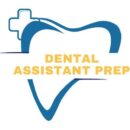Looking for programs in a specific city? Check out our lists of Dental Assistant Programs in Sioux Falls and Rapid City.
Ready to start your journey as a Dental Assistant in South Dakota? This guide breaks down the steps you need to follow.
- Understand the role of a Dental Assistant: Learn about daily tasks and responsibilities.
- Educational Requirements: Discover what education and training you’ll need.
- Certification and Licensing: Explore the certifications and licenses necessary in South Dakota.
Follow these easy steps to become a Dental Assistant in South Dakota.
Understand the Role of a Dental Assistant
Becoming a dental assistant in South Dakota is a rewarding career choice with various responsibilities that keep the work dynamic and engaging. As a dental assistant, you’ll be indispensable to your dental team, helping ensure the smooth operation of the dental office.
Patient Care and Comfort
Patient care is at the heart of a dental assistant’s duties. You’ll:
- Prepare Patients for Procedures: Before the dentist begins, you’ll get the patient ready, explaining the procedure, and making sure they are comfortable.
- Assist During Procedures: Hand instruments to dentists, operate suction devices, and manage any needs that arise during the procedure.
- Patient Education: Post-procedure, instruct patients on proper oral hygiene, post-operative care, and answer any questions they may have.
Administrative Responsibilities
Your role isn’t confined to clinical duties. You’ll also handle various administrative tasks, such as:
- Scheduling Appointments: Ensure that the dental office runs smoothly by scheduling and confirming appointments.
- Maintaining Patient Records: Keep accurate and up-to-date patient records, ensuring confidentiality and compliance with healthcare regulations.
- Billing and Insurance Processing: Manage billing procedures and insurance claims.
Clinical Assistance
In the clinical setting, you’ll carry out several critical tasks:
- Sterilizing Equipment: Ensure all dental tools and instruments are sterilized and ready for use, maintaining a sterile environment.
- Taking X-rays: Assist in capturing dental radiographs that help in diagnosing dental conditions.
- Inventory Management: Monitor and manage dental supplies to keep the practice well-stocked.
Being a dental assistant means being versatile and ready to handle various tasks to support the dentist and provide excellent patient care.
Educational Requirements
High School Preparation
To start on this career path, you typically need a high school diploma or equivalent. Emphasis on subjects such as biology, chemistry, and health can be particularly beneficial.
Dental Assisting Programs
CODA-Accredited Programs: After high school, it’s highly recommended to enroll in a dental assisting program accredited by the Commission on Dental Accreditation (CODA). These programs, often found at community colleges and technical schools, generally take about one year to complete. The comprehensive curriculum usually includes:
- Dental Anatomy: Understand the structure and function of the teeth and oral cavity.
- Radiology: Learn to take and interpret dental radiographs.
- Infection Control: Study methods to prevent and control infection in the dental office.
- Dental Materials: Get acquainted with the materials used in various dental procedures.
Importance of Accreditation
Attending a CODA-accredited program is essential for several reasons:
- Quality Education: Ensures you receive an education that meets the standards necessary for dental assisting practices.
- Certification Eligibility: Completion of a CODA-accredited program is often a prerequisite for taking certification exams, such as those offered by the Dental Assisting National Board.
Investing in your education through a CODA-accredited program is crucial for laying the foundation for a successful career in dental assisting in South Dakota.
Certification and Licensing
Initial Certification Steps
While certification is not mandatory for all dental assisting positions, obtaining certification can significantly enhance your job prospects. The most recognized certification is the Certified Dental Assistant (CDA) credential from the Dental Assisting National Board. To earn this certification, you must pass the following exams:
- General Chairside Assisting (GC): Tests knowledge and skills required for assisting in dental procedures.
- Radiation Health and Safety (RHS): Assesses understanding of radiographic procedures and safety protocols.
- Infection Control (ICE): Evaluates your grasp of infection prevention practices in the dental office.
South Dakota Specific Requirements
In South Dakota, the South Dakota State Board of Dentistry governs the certification and licensing of dental assistants. Certain roles may require specific state-mandated certifications, such as:
- Nitrous Oxide Monitoring: Allows you to monitor patients undergoing sedation.
- Coronal Polishing: Permits you to polish the coronal surfaces of the teeth.
Registering with the State Board
To legally perform these expanded functions, you must register with the South Dakota State Board of Dentistry. This registration ensures you are compliant with state regulations and authorized to perform these specialized duties.
Continuing Education
Certification does not end with examination. South Dakota requires dental assistants to engage in continuing education to maintain their licenses and stay current with advancements in dental practices. This ongoing learning ensures you provide the highest standard of care and remain competitive in the field.
Gaining Practical Experience
Importance of Hands-On Training
Practical experience is a critical aspect of becoming a proficient dental assistant. Much of this experience comes through externships and internships, often included in dental assisting programs. These experiences allow you to:
- Apply Classroom Knowledge: Put your theoretical knowledge into practice in a real-world setting.
- Develop Technical Skills: Gain proficiency with dental equipment and procedures under the supervision of experienced professionals.
- Enhance Patient Interaction Skills: Learn to communicate effectively with patients, alleviating their fears and providing clear instructions.
Externships and Internships
Externships and internships offer numerous benefits such as:
- Real-World Experience: Work in actual dental practice settings, performing tasks you’ll encounter in your career.
- Networking Opportunities: Build relationships with dental professionals that can lead to job offers post-graduation.
- Skill Development: Sharpen your skills, making you more attractive to potential employers.
Boosting Employability
Employers often prefer hiring dental assistants who have substantial hands-on training. Practical experience demonstrates your ability to perform essential duties effectively and handle the day-to-day realities of a dental practice. This real-world training is invaluable in preparing you for the diverse challenges you’ll face and reinforcing your classroom education with practical application.
Becoming a dental assistant in South Dakota involves navigating several important steps. By understanding the role, meeting educational requirements, obtaining necessary certifications, and gaining hands-on experience, you position yourself as a strong candidate in a rewarding field.
Job Search and Employment Opportunities
Creating an Impressive Resume
To begin your job search as a dental assistant in South Dakota, focus on building a robust resume. Your resume should highlight:
- Educational Background: Include details about your high school education and any CODA-accredited dental assisting programs you’ve completed.
- Certifications: List all relevant certifications such as the CDA credential and any state-specific certifications.
- Practical Experience: Detail your externships and internships, emphasizing hands-on experience gained in real-world settings.
- Skills: Highlight key skills like patient care, radiographic technique, and administrative tasks.
Networking and Job Boards
Networking can significantly enhance your job search. Join professional associations like the American Dental Assistants Association (ADAA) to connect with industry peers and potential employers. Use online job boards and local employment websites to find job listings. Career fairs focused on healthcare professions can also be valuable.
Interview Preparation
Prepare thoroughly for interviews. Anticipate common questions and practice confidently explaining your skills and experience. Key areas to focus on include:
- Clinical Skills: Be prepared to discuss specific dental assisting procedures you are proficient in.
- Patient Interaction: Explain how you manage patient care and comfort.
- Team Collaboration: Emphasize your ability to work within a dental team.
Key Employers in South Dakota
In South Dakota, dental assistants can find employment in various settings, including:
- Private Dental Practices: These are typically small to mid-sized offices focused on general dentistry.
- Orthodontic Offices: Specialize in braces and other orthodontic treatments.
- Public Health Clinics: Offer dental care to underserved communities.
- Corporate Dental Chains: Large organizations that operate multiple dental offices.
Focusing your search on these key employers can increase your chances of finding suitable employment.
Continuing Education and Career Advancement
Importance of Lifelong Learning
Continuous education is crucial for staying current in the dental field. South Dakota mandates ongoing education for certification renewal, ensuring you stay updated with the latest practices and technologies.
Specialization Opportunities
Consider pursuing advanced certifications to expand your scope of practice. Some options include:
- Certified Orthodontic Assistant (COA): Specializes in orthodontic procedures and requires additional coursework and exams.
- Expanded Functions Dental Assistant (EFDA): Allows you to perform more advanced procedures like placing temporary crowns.
Benefits of Advanced Certifications
Advanced certifications not only increase your skill set but also enhance your employability and earning potential. They signify a commitment to professionalism and excellence in dental assisting.
Educational Resources
Utilize educational resources offered by institutions and professional bodies. Workshops, online courses, and webinars are excellent ways to continue learning while balancing work responsibilities.
Salary and Job Outlook
Average Salary in South Dakota
The average salary for dental assistants in South Dakota is approximately $40,000 annually. Factors influencing salary include experience, location, and certifications held.
Job Growth Projections
The job outlook for dental assistants is promising. The Bureau of Labor Statistics projects a 7% growth in dental assistant positions from 2020 to 2030. This growth is driven by an increased focus on preventive dental care and expanding dental practice environments.
Salary Influencers
Several factors can impact your salary as a dental assistant:
- Experience: More experienced dental assistants often command higher salaries.
- Location: Urban areas like Sioux Falls and Rapid City tend to offer higher wages due to increased demand.
- Certifications: Holding advanced or specialized certifications can significantly boost your earnings.
Resources and Support
Professional Organizations
Joining professional organizations can provide support and valuable resources. The American Dental Assistants Association (ADAA) offers:
- Networking Opportunities: Connect with peers and industry experts.
- Professional Development: Access to conferences, workshops, and certification courses.
- Industry Updates: Stay informed about new regulations and technologies in dental care.
Online Communities
Online forums and social media groups dedicated to dental assisting can offer advice, share experiences, and provide peer support. These platforms are excellent for:
- Peer Support: Engage with other dental assistants who can offer tips and guidance.
- Job Listings: Many online communities share job openings and career opportunities.
Continuing Education Providers
Utilize continuing education providers like DANB and local community colleges. They offer courses and workshops to help you stay certified and enhance your skills.
- Workshops: Participate in hands-on workshops to practice new skills.
- Online Courses: Flexibly manage your learning with online modules.
- Industry Conferences: Attend conferences to network and learn about the latest advancements in dental technology.
South Dakota State Board of Dentistry
The South Dakota State Board of Dentistry is a crucial resource for understanding state-specific regulations and requirements. They provide:
- Licensing Information: Stay updated on the necessary steps for maintaining your license.
- Regulatory Updates: Be informed about any changes in dental assisting laws and regulations.
Looking for Dental Assistant Information On States Bordering South Dakota?
In addition to South Dakota, we suggest looking for schools in nearby states.
- How to Become A Dental Assistant in North Dakota
- How to Become A Dental Assistant in Minnesota
- How to Become A Dental Assistant in Iowa
- How to Become A Dental Assistant in Nebraska
- How to Become A Dental Assistant in Wyoming
Conclusion
In summary, becoming a dental assistant in South Dakota involves understanding the role, meeting the educational and certification requirements, gaining practical experience, and continuously advancing through education and specialization. Utilizing the resources and support systems available can significantly enhance your career development in this rewarding field. Follow these steps to embark on a fulfilling career that contributes to oral health and patient care.

